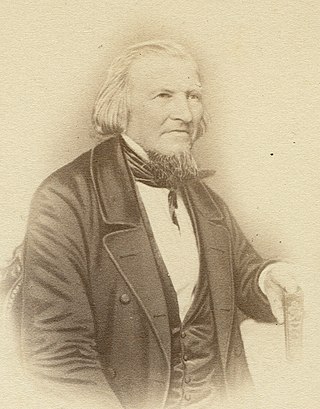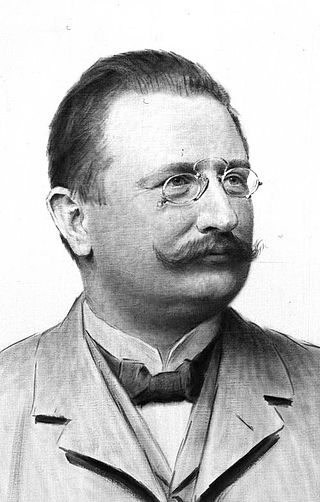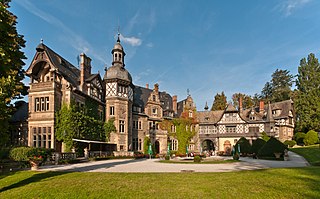
Hellmuth Eduard Ferdinand Lucius von Stoedten, (14 July 1869, Estate Klein Ballhausen, Thuringia - 14 November 1934, Berlin) [1] was a German diplomat during WWI.

Hellmuth Eduard Ferdinand Lucius von Stoedten, (14 July 1869, Estate Klein Ballhausen, Thuringia - 14 November 1934, Berlin) [1] was a German diplomat during WWI.
His father was Robert Lucius, Prussian Minister of Agriculture, and a confidant of Otto von Bismarck.

Hellmuth was initially attaché in Paris 1898-1900 and till 1906 secretary. In 1911 he was a counsellor in St. Petersburg. From 1914 he was a diplomatic agent and consul general in Durazzo, Albania. From 1915 to 1920 he was the German ambassador in Stockholm. Von Stoedten was very instrumental in the preservation of Swedish neutrality in World War I. [2] During the war he had a different view on the German policy towards Russia after the Russian Revolution than the military leadership. Erich Ludendorff accused the messenger even of disloyalty.[ citation needed ] However, Lucius was protected by the German Foreign Office. [3] In addition to other embassies in Stockholm he was largely responsible for the contacts with Alexander Protopopov, and the Russian opposition and revolutionaries. As such, he played a role in 1917 in the transport of Lenin from the German sphere of influence over Sweden to Russia. [4] [5] Between 1921-1927 he was envoy in The Hague till he became sick.
On 9 April 1896, He married Baroness Bertha von Stumm-Halberg (22 February 1876 – 30 January 1949), daughter of industrialist Baron Carl Ferdinand von Stumm-Halberg. Together, they were the parents of two daughter:
Hellmuth and Bertha divorced in 1907, and his ex-wife married Adalbert von Francken-Sierstorpff in 1912. [6]
He was the owner of a manor in Stödten Straußfurt, inherited the family estate Ballhausen after the death of his eldest brother Otto Baron Lucius of Ballhausen (1932). Since then Hellmuth was the "Baron Lucius of Ballhausen".
Lucius von Stoedten is known a patron of the arts. By Auguste Rodin, with whom he was friends, he acquired the marble sculpture "The Kiss". Gerhart Hauptmann also counted among his friends. Von Stoedten possessed an important collection of letters of Heinrich Heine. Rainer Maria Rilke dedicated Lucius von Stoedten in 1922 an opportunity poem that led Martin Heidegger to the question: "Why poet?" [7]

August Heinrich Hoffmann was a German poet. He is best known for writing "Das Lied der Deutschen", whose third stanza is now the national anthem of Germany, and a number of popular children's songs, considered part of the Young Germany movement.

August Ludwig von Schlözer was a German historian and pedagogist who laid foundations for the critical study of Russian medieval history. He was a member of the Göttingen school of history.

Otto Ferdinand Georg Kern was a German classical philologist, archaeologist and epigraphist. He specialized in the field of ancient Greek religion, being known for his investigations of Greek mystery cults and Orphism, as well as the ancient city of Magnesia on the Maeander and later also the history of ancient studies. In 1907 he became professor at the University of Halle-Wittenberg, where he became rector in 1915/16.

Ballhausen is a municipality in the Unstrut-Hainich-Kreis district of Thuringia, Germany.
Otto Friedrich Bollnow was a German philosopher and teacher.

The Deutschvölkischer Schutz- und Trutzbund was the largest and the most active antisemitic federation in Germany after the First World War, and an organisation that formed a significant part of the völkisch movement during the Weimar Republic (1918–1933), whose democratic parliamentary system it unilaterally rejected. Its publishing arm issued books that greatly influenced the opinions of Nazi Party leaders such as Heinrich Himmler. After the organisation folded in around 1924, many of its members eventually joined the Nazis.

Theodor Christian Lohmann was a 19th-century German administrative lawyer, civil servant and social reformer, second in importance only to Otto von Bismarck in the formation of the German social insurance system. He is considered one of the major forces advocating for legislation for occupational safety and health, as co-architect of Bismarck's social security and as a seminal figure in the relation of Diakonie and social politics.

Mark Lidzbarski was a Polish philologist, Semiticist and translator of Mandaean texts.

Rudolf Rahn was a German diplomat who served the Weimar Republic and Nazi Germany. As a member of the Party, and as Plenipotentiary of the Italian Social Republic in the closing stages of the Second World War, he was arrested and held at Nuremberg as a potential war criminal, but he was released in 1949 and deemed to be denazified in Class V (exonerated).

The Spartacus League was a Marxist revolutionary movement organized in Germany during World War I. It was founded in August 1914 as the International Group by Rosa Luxemburg, Karl Liebknecht, Clara Zetkin, and other members of the Social Democratic Party of Germany (SPD) who were dissatisfied with the party's official policies in support of the war. In 1916 it renamed itself the Spartacus Group and in 1917 joined the Independent Social Democratic Party of Germany (USPD), which had split off from the SPD as its left wing faction.

The Reifenstein schools were the various schools of higher education for women associated with the Reifensteiner Verband.
Eduard Otto Emil Karl Adam Freiherr von Stackelberg was an Estonian chemist, landowner and politician who belonged to the Stackelberg family. As a chemist, he proposed a model for the periodic table in 1911. He was among the Baltic German landowners deported to Siberia, first by the Tsarist authorities and later by the Bolsheviks. Following World War I he lived in Germany. In 1927 he published a memoir.

Knut Otto Christian Hans Konstantin Hubertus von Kühlmann-Stumm, was a German politician for the Free Democratic Party who owned Ramholz Castle.

Ferdinand Eduard, Freiherr von Stumm, was a Prussian and German diplomat.

Ferdinand Carl, Freiherr von Stumm was a German diplomat and industrialist.

Carl Ferdinand, Freiherr von Stumm-Halberg was a Prussian mining industrialist and Free Conservative politician. As a Privy Councilor of Commerce, baron, member of the Prussian House of Representatives, member of the Reichstag and founding chairman of the German Reich Party, he was one of the most influential men in Prussia and one of the richest people in the German Empire.

Rauischholzhausen Castle is a German castle located on the outskirts of Rauischholzhausen, a village in Ebsdorfergrund in the southeast of Marburg-Biedenkopf district in Hesse. Today, the castle belongs to the University of Giessen, which uses it as a conference facility. The castle is surrounded by the 32-hectare (79-acre) Rauischholzhausen Castle Park, an English landscape garden that was created together with the construction of the castle between 1871 and 1876.

Halberg Castle is a German castle built between 1877 and 1880 on Halberg mountain near Saarbrücken. The castle is located in the area of the former municipality of Brebach, which was merged with Fechingen to form Brebach-Fechingen in 1959 and incorporated into Saarbrücken in 1974. The castle complex, which was designed by the architects Edwin Oppler and Ferdinand Schorbach for Carl Ferdinand von Stumm-Halberg, is the second largest neo-Gothic secular building in Saarland after the St. Johann Town Hall despite renovations and partial demolition after World War II.
Hugo Rudolf Christian, Freiherr von Stumm-Ramholz was a German industrialist, landowner, member of the state parliament and Prussian cavalry officer. He commissioned Ramholz Castle, built near Schlüchtern from 1893 to 1896.

Ramholz Castle is a German castle located in the hamlet of Ramholz in the Vollmerz district of the town of Schlüchtern, around 40 kilometres southwest of Fulda. The castle and park are cultural monuments according to the Hessian Monument Protection Act.